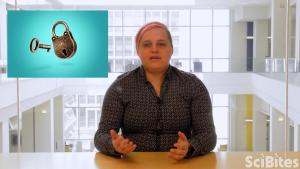Protecting Transplant Patients From Cellular Assault
Patients whose blood cells don’t work correctly can be cured by receiving blood-cell-producing bone marrow from a healthy person via a bone marrow transplant. Unfortunately, the patient’s new bone marrow can attack his or her body, causing a potentially life-threatening condition called graft-vs-host disease. Natalia Schneider Nunes, a postdoctoral research fellow in the Intramural Research Program at the National Institutes of Health, studies a treatment for this illness called cyclophosphamide in the hopes that better understanding how it works can make bone marrow transplants safer and more effective.
Click here to learn more about the research being done in Natalia’s lab.
Interested in finding out for yourself what it’s like to do research at NIH? Check out our training opportunities to learn about the IRP’s programs for students, recent graduates, and postdoctoral fellows.
Still hungry for more SciBites? Watch more.
Categories:
Graduate students Women in science Immune system
Related Videos
This page was last updated on Monday, August 7, 2023




